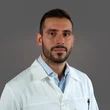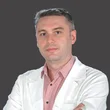This is how our application simplifies the booking and administration process. Interested >>
Scoliosis surgery
Scoliosis is a common disorder in childhood, and its treatments vary based on its types. More severe cases may require surgery.
The most common structural deformity in childhood and adolescence is scoliosis. Its incidence may be as high as 1.5 3% in the population, but the ratio of severe cases within this number is low. The generalized, three-dimensional complex deformity of the spine is called structural scoliosis. The magnitude of scoliosis is measured by the so called Cobb angle (this is the supplementary angle of the angle which is created by the lines drawn along the endplates of the initial and end vertebrae, which are involved in the curvature.)
What could be the signs of scoliosis in childhood?
Scoliosis in childhood almost never causes pain. The first sign which raises the attention to the disease is usually the asymmetry between the shoulders and the upper body. It is also the consequence of the above that it is usually diagnosed late despite the medical screenings at school, which otherwise are in operation in Hungary.
Types of scoliosis
Structural scoliosis can be classified into two large groups:
- Scoliosis without a known cause (idiopathic) (80%)
- Scoliosis with a known cause (20%). This includes scoliosis which developed as a consequence of congenital developmental disorders of the vertebrae, or neuromuscular causes (e.g., ICP, SMA, Duchenne, traumatic paraplegia), and scoliosis associated with other, various diseases (e.g., systemic, soft tissue diseases, metabolic diseases, tumor, etc.)
The other possible classification is based on the age at onset:
- Early onset, where the disease develops before the age of 10 years.
- Late onset, where the pathologic curvature of the spine presents after the age of 10 years.
The above classification has a significance from the treatment’s aspect, because there are small differences in the treatment protocols of scolioses with different origins, and scolioses presenting at different ages.
How is scoliosis diagnosed?
During a simple physical examination, the change in the spine’s natural curvatures, the presentation of a pathologic curvature from the side, the asymmetry of the pelvic wings, shoulder blades, costal arches, and generally the whole upper body raise the attention to the disease. In addition to this, an X ray image, which shows the whole spine in a loaded position (in standing), is inevitable for a correct diagnosis, and the further treatment of the patient.
What are the treatment options?
Non surgical (conservative) treatment
The magnitude of the scoliosis is characterized by the value of the previously mentioned Cobb angle. Scoliosis cannot be concluded when the Cobb angle is smaller than 10 degrees. The treatment varies based on the severity and the origin (etiology) of the curvature; we will provide information about the treatment protocol for scoliosis without a known cause (idiopathic origin).
- Cobb angle is 10 20 degree: observation, special, individualized physiotherapy (Schroth/SEAS therapy).
- Cobb angle is 20 45/50: special, individualized physiotherapy (Schroth’s therapy), and wearing a corrective brace (the Cheneau brace is widely used nationally). In case of a scoliosis with idiopathic origin, the condition for indicating brace treatment is the magnitude of the curvature, significant progression (the Cobb angle increased with more than 5 degrees within half a year), the skeletal maturity did not occur yet (Risser sign: <3), and the mobility of the spine is more than 40%. In case of curvatures of less than 40 degrees, brace treatment is suitable to decelerate or stop condition deterioration.
- Cobb angle is 45 50 degrees: surgical treatment.
Surgical treatment
The goal of the surgical treatment is to prevent the further deterioration of the scoliosis, correct the present deformity in all three dimensions of the space (involving as few spinal segment as possible), which includes the elimination or reduction of the costal deformity. An additional goal is to create the balance position of the spine, set the ideal balance, and to get esthetic, final, and permanent results.
Surgical treatment is recommended for curvatures, where the Cobb angle is over 45 degrees in the lumbar spine, and over 50 degrees in the thoracic spine, and in cases where rapid progression (the deterioration is more than 10 degrees within a year) is observed.
The treatment protocols for early onset and late onset cases are different. Since during a corrective scoliosis surgery, the spinal segment affected by the scoliosis is fixated, permanent corrective surgeries cannot be performed under the age of 12 years, because this would inhibit the spine from growth.
In case of early onset scolioses, a so called "growing implant system” is implanted. This means that screws and a rod system made of titanium will be implanted in the child’s back, which correct the scoliosis. This rod system has to be expanded as the child grows, so in this case, a series of surgery are needed with the expansion of the implant at least once a year. At the end of the series of surgery (usually at the age of 12 year the earliest or when bone maturity allows), the final correction of the curvature or curvatures is usually performed during a longer surgery, and the given spinal segment will be permanently fixated in this straightened position, so no further surgeries will be necessary.
In late onset (adolescent) cases, we strive to correct the developed curvature with one surgery only. Scoliosis surgeries are usually longer interventions (4 12 hours), during which fixation anchors (usually screws or staples made of titanium) are implanted, and the natural joint connections of the spine are released, thus making the spinal segment affected by the scoliosis mobile, then the corrected position is maintained with the help of a fixation rod system. The surgery is final, so the spinal segment, which was fixated once will never move again, and apart from a few extreme situations, there will not be any need for the removal of the metal implants in the future.
In addition to the nowadays available modern implant systems and surgical technique, we strive to provide one time surgical solutions in every case, but in extreme situations, a surgical treatment which consists of two phases may be necessary (opening the chest, and releasing the front part of the spine, followed by stabilization with the posterior surgery in the second phase, in the described manner).
A preparatory treatment may be necessary in some rare, but severe cases of scoliosis, during which the spine is stretched with weights, which are suspended on the HALO “crown” that is secured to the child’s cranium. A stretching treatment like this may require inpatient care for even 3 4 months.
What happens if the justified surgical treatment is not performed?
- In severe cases, the respiratory surface of the lungs gets smaller, and the blood flow in the lungs become more difficult, which leads to the overload of the heart.
- The degenerative changes of the spine, which cause pain, may accelerate.
- Further aggravation of the curvature may lead to severe esthetic changes.
If you have any questions, please send a letter to magankorhaz@bhc.hu!



